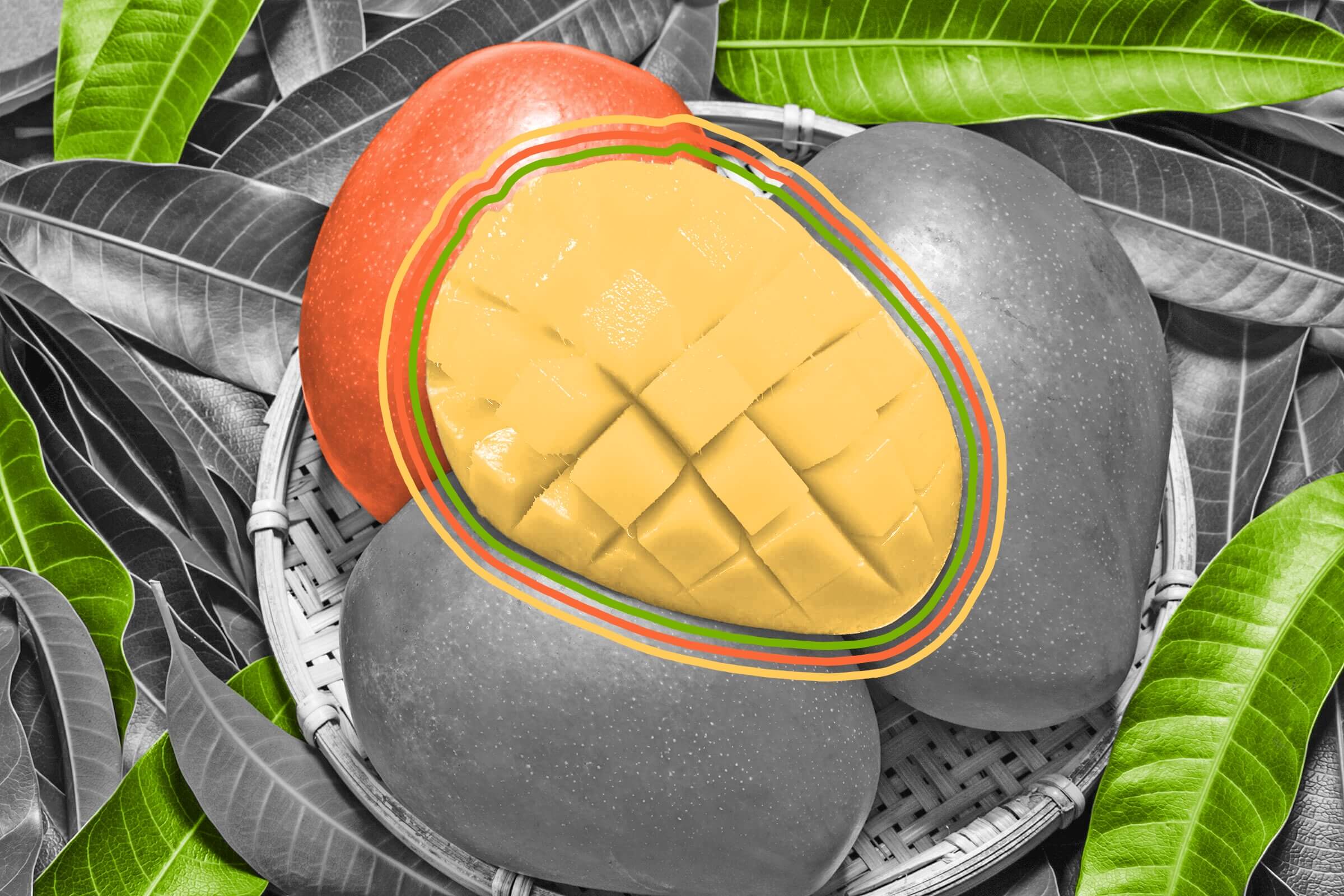| Many experienced hikers are familiar with the phrase "leaves of three, let it be." That's because poison ivy and oak can be identified by their three-leaf clusters. (The leaves of a poison sumac, it's worth noting, bunch in groups of seven to 13.) Despite its name, poison ivy (Toxicodendron radicans) isn't actually poisonous. Instead, it contains the organic compound urushiol, produced by the ivy's leaves, which causes irritating allergic skin reactions. It's thought that poison ivy, as well as other members of the plant family Anacardiaceae, produce this compound to fight off insects. Unfortunately, our skin can become an innocent bystander if it's in the wrong place at the wrong time. However, urushiol isn't sequestered in just these summertime foes — in fact, the compound is hiding among fruits at your local market. Poison ivy is in the same plant family as mangoes, and the skin of the fruit contains the same compound (though in a less concentrated form). Although the mango itself is safe to eat, reactions to mango skins — such as a rash — can vary in severity from person to person, and the amount of urushiol can vary from fruit to fruit. Green mangoes, for example, are known to contain more urushiol in their skin than ripe, multihued mangoes. Yet mangoes aren't the only food with this irritant at your local grocery store. Cashews, which are also part of the Anacardiaceae family, are botanically known as "drupe seeds" produced by cashew trees (Anacardium occidentale). However, you'll never see cashews sold in their shells, because the shells contain urushiol. So while "leaves of three" remains a good rule when bushwhacking in the backcountry, urushiol takes many forms — including some notably delicious ones. | 






No comments:
Post a Comment